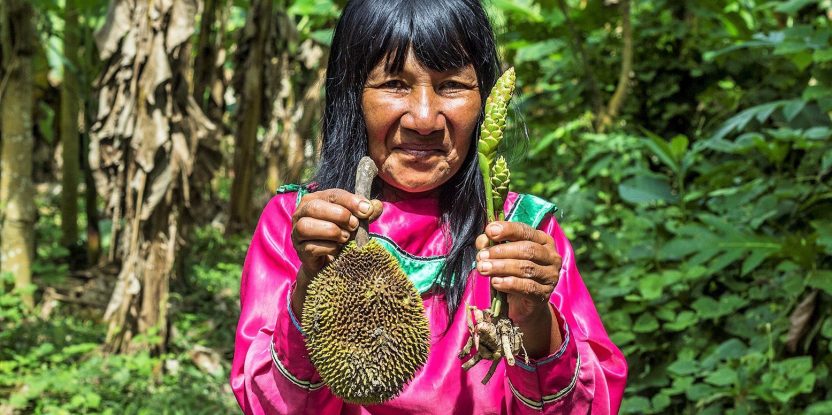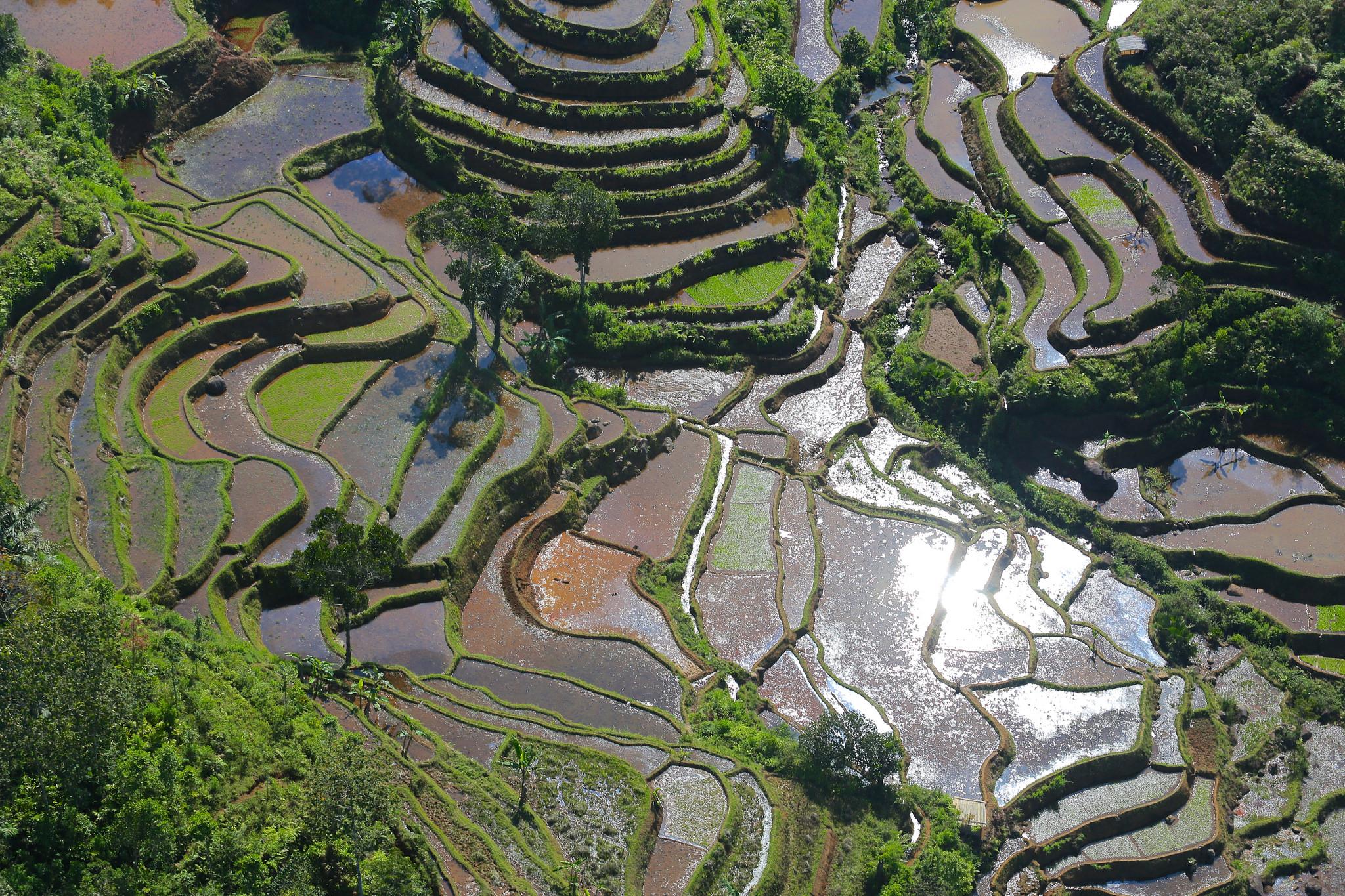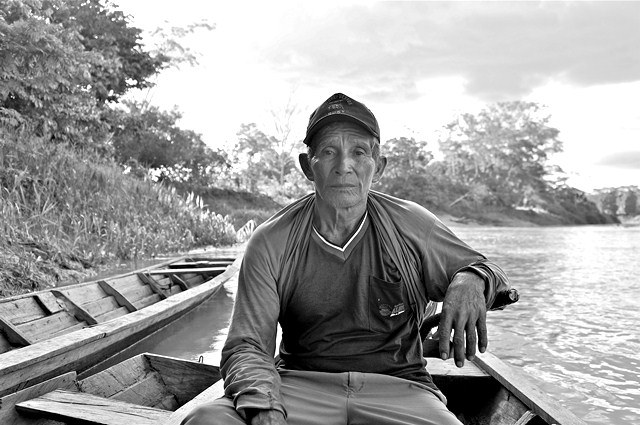
Multiple international and bilateral agreements compel – though do not legally bind – Peru to halt deforestation in the near future. Despite these commitments, deforestation persists.
Confronting deforestation requires understanding and addressing its drivers – who deforests, why they deforest, and where the deforestation occurs.
In a new paper in Conservation Letters, CIFOR researchers draw attention to the complex set of drivers of deforestation in the Peruvian Amazon and analyze the origins of what they consider an overly simplified explanatory narrative for deforestation. They suggest that the common public narrative is not supported by evidence, and provide alternative recommendations for a more balanced approach to understanding the problem.
There are diverse processes at play behind deforestation in the Amazon
A questionable narrative
During public meetings in Lima since 2014, starting with the run-up to the 20th Conference of the Parties (COP20) of the UN Framework Convention on Climate Change, CIFOR scientists heard repeated public expressions of a particular narrative about the drivers of deforestation that didn’t seem quite right.
The narrative was expressed in different ways at different times, but one particularly striking example comes from a poster displayed in the public ‘Forest Pavilion’ event that ran for a whole week alongside the COP20 proceedings. The poster read:
“90% of the logging and burning of Peru’s Amazon forests occurs at the hands of peasants living in poverty who migrate from the highlands and practice subsistence agriculture.”
Based on the CIFOR team’s experience conducting political ecology and forestry research in the dynamic landscapes of the Peruvian Amazon, it struck them as odd that such a generic and singularly damning claim would be made so publicly, and with such confidence. There are diverse processes at play behind deforestation in the Amazon, and both the immediate and underlying drivers of deforestation are surely more complex than this narrative suggests.
The key premise underlying such a narrative is that the main driver of deforestation in Peru is small-scale, or so-called ‘migratory’, agriculture.
But is this really the case?
The team set out to investigate where this conclusion came from, and what evidence supported it. The results were surprising. In a nutshell, it was found that the only supporting evidence for the public narrative came from remote-sensing data, which indicated that recently deforested patches were very small in size. Period.
The studies cited to support this analysis based their assessment on the frequency of small patches of deforestation. One source reported that 75% of deforested patches were smaller than 0.5 ha, and a further 15% were 0.5 to 1.0 ha. Without any apparent assessment of what the land use was in those patches, the study used these figures to conclude that the main culprits of deforestation were subsistence farmers.
Crucially, CIFOR’s research team found that not one of the cited sources supporting this conclusion involved any field-based verification of remotely sensed data. In reality, small deforested patches can indicate any number of processes – from subsistence agriculture in sustainable rotating systems, to speculative clearing in primary forests for expansion of cash crops.
‘Ground truthing’, or verifying satellite data with facts on the ground, can reveal who the actors were, their motivations for deforestation, for what purpose it was conducted, and what kind of forest was cleared. And this information can lead to effective strategies to confront both the underlying and immediate drivers of deforestation.
Checking the facts
A study led by a different group of CIFOR scientists, on a continent-wide assessment of the drivers of deforestation, used expert human interpretation of fine-scale satellite imagery to go beyond simply measuring the size and frequency of deforestation events. These scientists aimed to determine post-deforestation land uses, which is at least another piece of the puzzle.
While the authors of that study included a caveat that small-scale land uses are difficult to classify by remote sensing, they did report with some confidence that 41.9% of deforestation events in all of Peru were followed by smallholder cropping — a far smaller figure than the 90% reported by the Peruvian government.
By not considering the complex dynamics of who is deforesting, why they are doing it, and where, the prevailing narrative is imprecise and inhibits the design of effective strategies to change behavior on the ground.
Clarifying the terms
A second source of confusion and inaccuracy in the public narrative is the use of the ambiguous term ‘migratory agriculture’. Does it refer to shifting agriculture, or agriculture by migrants? Because these can be two very different things.
‘Migratory agriculture’ is sometimes used in the narrative to refer to swidden-fallow agriculture, or shifting cultivation, wherein farmers rotate production among active fields of annual crops and regenerating forest areas, or fallows. Such cycles produce temporal and spatial mosaics of crop fields and forest that can be relatively stable and sustainable.
Other times, it refers to ‘agriculture by migrants’. For example, Che Piu and Menton use this definition in reference to the expansion of the agricultural frontier via the influx of migrants who may convert forest for agricultural use.
In other cases, the detected clearings may be the result of logging. It is feasible that poorly conducted single-tree selection logging for very large canopy emergents, such as Dipteryx spp. in western Amazonia, can result in a canopy gap as large as 0.3 ha.
The simplifying language of ‘migratory agriculture’, or even ‘small-scale agriculture’, that has pervaded contemporary discussions obscures important distinctions among classes of actors and drivers of deforestation.
Such highly generalized explanations of what drives deforestation should be discarded in exchange for a more nuanced understanding of both proximate and underlying drivers of deforestation. This information then can better inform policy.
It is a giant step backwards to place the blame for deforestation generically and uncritically on the shoulders of the most marginalized and least capitalized actors, the smallholder farmers.
To their credit, Peru’s national forest service (SERFOR) and regional forest authorities have made progress in recent years in carrying out participatory processes to enable government, civil society, and local communities to work together towards sustainable and equitable access to and use of the country’s forests and forest resources.
Therefore, it is a giant step backwards to place the blame for deforestation generically and uncritically on the shoulders of the most marginalized and least capitalized actors, the smallholder farmers. Instead, the strengths of the Amazonian people to achieve environmental, livelihood, and development objectives should be recognized and honored, and authorities should aim to work with them to design and implement effective policy.
The way forward
Ultimately, deforestation in undesignated natural areas must cease in Peru, including halting illegal logging and the advance of the agricultural frontier into mature forest. At the same time, authorities and NGOs should recognize that episodic deforestation is part of smallholder agricultural systems, and, furthermore, that agricultural expansion will continue to occur. It is the role of the local authorities to ensure that it occurs only in authorized areas.
To achieve these goals, while still meeting national objectives of sustainable development, a deeper, more critical analysis of the drivers of deforestation, and, importantly, how to address them, is essential.
This can be supported by rigorous mixed-methods research on the drivers of deforestation, coupled with multi-stakeholder processes to evaluate opportunities and trade-offs. Such information can be translated into action through political negotiations.
As is always the case, divergent interests will have to be negotiated. Nevertheless, understanding the realities of deforestation is a necessary starting point for such conversations. And this should be communicated to the public in a narrative that acknowledges multiple and complex causes, rather than one that blames marginalized communities and alienates the rural population of Amazonia.
Strategic planning that achieves a balance between conservation and development goals starts with better understanding of the needs and realities of multiple stakeholders.
We want you to share Forests News content, which is licensed under Creative Commons Attribution-NonCommercial-ShareAlike 4.0 International (CC BY-NC-SA 4.0). This means you are free to redistribute our material for non-commercial purposes. All we ask is that you give Forests News appropriate credit and link to the original Forests News content, indicate if changes were made, and distribute your contributions under the same Creative Commons license. You must notify Forests News if you repost, reprint or reuse our materials by contacting forestsnews@cifor-icraf.org.


